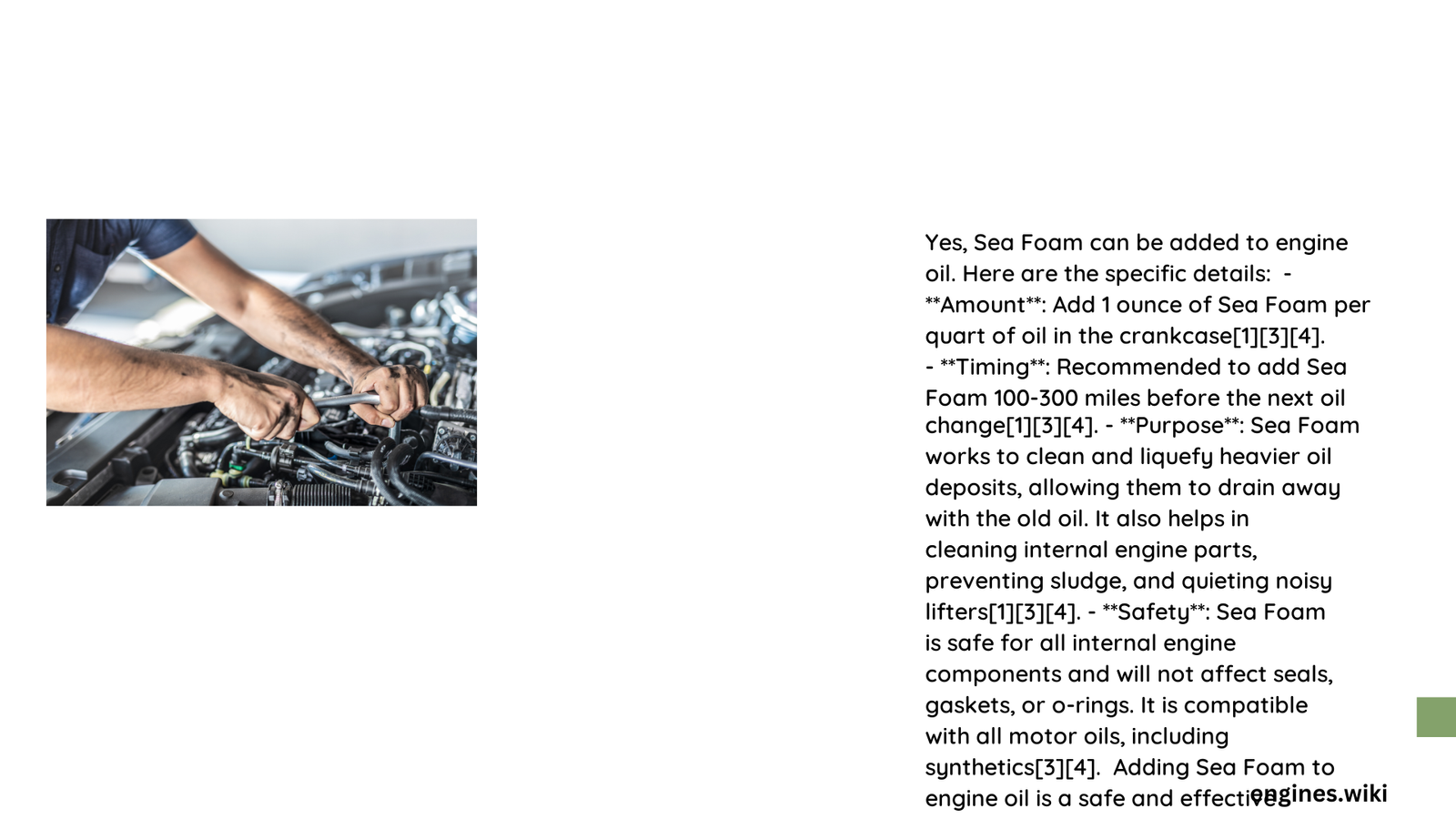Sea Foam Motor Treatment offers vehicle owners a potential solution for engine maintenance, addressing concerns about crankcase cleanliness and engine performance. Automotive enthusiasts and mechanics have long debated the effectiveness of adding Sea Foam directly to engine oil, seeking a reliable method to reduce engine deposits, minimize wear, and enhance overall engine longevity. This comprehensive guide explores the critical aspects of using Sea Foam in engine oil, providing definitive insights for vehicle owners.
What is Sea Foam Motor Treatment?
Sea Foam is a petroleum-based engine treatment designed to clean and maintain internal engine components. Unlike traditional chemical additives, it’s a specialized solution that helps:
- Dissolve harmful engine deposits
- Reduce friction between moving parts
- Improve overall engine performance
- Compatible with various engine types and oil formulations
Can Sea Foam Be Safely Added to Engine Oil?

Compatibility Factors
Vehicle owners can confidently add Sea Foam to their engine oil across different scenarios:
| Engine Type | Oil Compatibility | Recommended Dosage |
|---|---|---|
| Gasoline Engines | Conventional & Synthetic | 1-1.5 oz per quart |
| Diesel Engines | All Grades | 1-1.5 oz per quart |
| High-Performance Engines | Synthetic Blends | 1-1.5 oz per quart |
Potential Benefits of Sea Foam in Engine Oil
- Deposit Removal
- Gradually re-liquefies old oil residues
- Helps filter out accumulated contaminants
-
Prevents varnish buildup in crankcase
-
Engine Component Protection
- Frees sticky lifters and rings
- Reduces potential mechanical wear
- Maintains internal engine cleanliness
How to Properly Apply Sea Foam in Engine Oil?
Step-by-Step Application Process
- Verify your engine’s total oil capacity
- Calculate the appropriate Sea Foam quantity
- Add Sea Foam 100-300 miles before scheduled oil change
- Allow treatment to circulate through engine components
Important Considerations
Warning: Excessive use might require more frequent oil changes due to increased cleaning activity.
Technical Insights and Limitations
Performance Expectations
Sea Foam does not:
– Alter existing oil viscosity
– Compromise engine seals or gaskets
– Introduce harmful chemical additives
Recommended Usage Frequency
- Standard vehicles: Every 3,000-5,000 miles
- High-mileage engines: Potentially more frequent applications
- Consult manufacturer recommendations
Expert Recommendations
Professional mechanics suggest:
– Use Sea Foam as a preventative maintenance tool
– Monitor engine performance after application
– Maintain regular oil change intervals
– Consider professional consultation for specific engine types
Final Technical Assessment
Sea Foam Motor Treatment provides a scientifically-backed method for maintaining engine health when used correctly. Its petroleum-based formulation ensures compatibility with most engine configurations and oil types.
Reference:
– Sea Foam Official Website
– Automotive Maintenance Resources
– Professional Mechanic Forums
